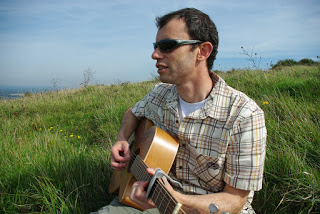Epiphany sermon / 8 Jan 2023 / St Edward’s Church
Readings: Matthew 2:1-12, Isiah 60:1-6
Happy New Year!
I wonder how we are feeling at the start of this new year?
Are we looking ahead with hope? With excitement perhaps at something coming up?
Are we feeling a bit ‘meh’ like it’s just another day, another week, it’s not a big deal starting a new year.
Perhaps you are finding it hard to find hope for the year ahead?
Wherever we are at I want to simply draw us back to Jesus, following that star that the wise men followed. To seek hope, to seek life and growth, and to know Jesus more fully.
Our Isaiah passage is the lectionary reading for Epiphany, a chosen reading for the day, he again uses a metaphor of light in the darkness as we have heard in some of our Christmas readings.
For the Jewish people, having endured the darkness of repeated hardship – the hope of light was encouraging. As one author says:
Once again after having their hopes lifted by the promise of restoration, they found themselves longing for the shaft of light that would pierce the gathering gloom and guide them toward a life of integrity and wholeness.
(Hanson, Paul D. Bible Commentary on Isaiah 40-66, p.220)
At the start of this new year I want to encourage us as a church, point us, centre us, once again on the light that draws us from the gathering gloom and guides us towards Christ and a life of integrity and wholeness.
In the last year as a church we have rightly and necessarily focussed on the vision, the future, the practical things that need to be done and put in place. That of course will continue, perhaps with less up front prominence but continuing to reach out for our vision goals in the background. But now we must refocus ourselves on the why, and the who, in the depths of our own hearts, minds and souls…
So let’s take step back a moment. Today we think about the story of the magi visiting the infant Jesus. You know I find the wise men part of the Christmas story really interesting.
There is so little info about them and yet so much conjecture used over the years (as well as theological and historical research of course!). Traditions have grown from this, our crib scenes include the magi appearing alongside everyone else, there are camels and more!
Some academics don’t believe the account in Matthew is accurate, perhaps it’s more symbolic?
There were 3 magi simply because that’s how many gifts there are – if you notice the passage does not say how many there were just that they were more than 1.
Magi are also referred to as wise men or kings – possibly this is influenced by some verses in Psalm 72: 10-11
May the kings of Tarshish and of distant shores bring tribute to him.
May the kings of Sheba and Seba present him gifts.
May all kings bow down to him and all nations serve him.
And then the magi acquire names – not from the scripture of course, where do they come from?
The basis for the star they followed may be from Numbers 22-24 in which a soothsayer from the east (a magus) foretells the coming of a great ruler “out of Jacob”.
Equally though historical research shows that the term Magi is related to the tribe of priests who acted almost like a religious civil service to the various empires of the area.
Josephus (ancient historian) tells us that no one could be King in Parthia unless they knew the ways of the Magi and were supported by the Magi.
They had a reputation throughout the region for being educated, wise, learned, religious priests with a wide knowledge of religions. They were clearly more than wandering fortune tellers or they could never have got an audience with Herod, so the likelihood of them having some social standing is high.
And of course we know they would not have come until much later, Jesus was probably aged 2 or more, but we put all these parts of the stories together in a lovely tableau!
(Thanks to Ian Paul for an excellent post here for some of the above.)
So let’s ask – If this is not accurate or true – Is Jesus light still shining in the darkness? Just as the star did, drawing people to him? Yes. Do the Herod’s of this world seek to extinguish the light? Yes.
And if this is not true then why is this story here in the canon of scripture, chosen to be in the bible, what is it telling us?
Well I wonder about how the magi’s lives were changed after this – we hear nothing more after they travel off and avoid Herod on the way back.
For them perhaps this moment of meeting Jesus was a culmination of all they had studied, learned, debated. A pivotal moment of revelation. From here on their lives and their studying and teaching would change. If they had such vast influence over kings and leaders, what would they now be sharing? Who would they be approving as kings?
It’s an echo of the Jewish faith looking forward to a Messiah and then finding the culmination of their faith in Jesus, the Messiah long prophesied.
Lives were changed in being drawn by the light to meet this new king, Son of God, our saviour.
No one who met him knew what the future was going to be, but I am sure they went away with that light of hope in their hearts. Bubbling over with excitement for the future. So much promise.
This morning I want us to seek that same experience, not just now but as we move into this new year. To meet with Christ afresh, to seek to know him more and deeper. So that we too are transformed in knowing him.
We’re continuing on finishing John between next week and Lent, but I also want to help us focus on key areas this year that can help us go deeper in our faith.
We are going to look at prayer particualry, later in the year doing the prayer course, and for lent we are going to do the Lectio365 course. More info to follow.
But before we get into any of that we need to commit ourselves afresh.
In the Methodist Church each year they hold a Covenant service, usually at the start of the year and as part of that service they commit again to God with a covenant prayer.
This prayer was instigated by John Wesley, founder of the Methodist church. It was so important to him, people were encouraged to take time to pray and fast before coming together to say this prayer.
The traditional Covenant prayer makes it very clear that this affirmation is a serious one that embraces the whole of our life, in all its parts. Most people find it quite tough to say, and really mean it. But the prayer is so central to the Christian life that other Churches have also adopted it.
This prayer is about surrendering to God in love and joy. The Covenant is not a contract, rather, it is the means of grace by which we accept the relationship with God and then seek to sustain it. It is not so much about getting into a relationship with God as it is about staying in it. It is about living within the loving relationship that God has already offered us.
(Info above from The Methodist Church here).
And so we are going to say that prayer together this morning a bit later on. I invite you to join together to say together that we love God, we will serve God and be led by God in all things.
The words of the prayer are profound and perhaps hard to say. We don’t have days to fast and pray like the early Methodists but I invite you to take a moment after you have received communion to read the prayer through once or twice and think about the words before we pray it together.
Let us take this opportunity to commit again to the Lord today and throughout this year ahead. To. Be led always by the ‘bright and morning star’ and to seek to meet him just as the wise men did and to know him more.
Amen




No Comments